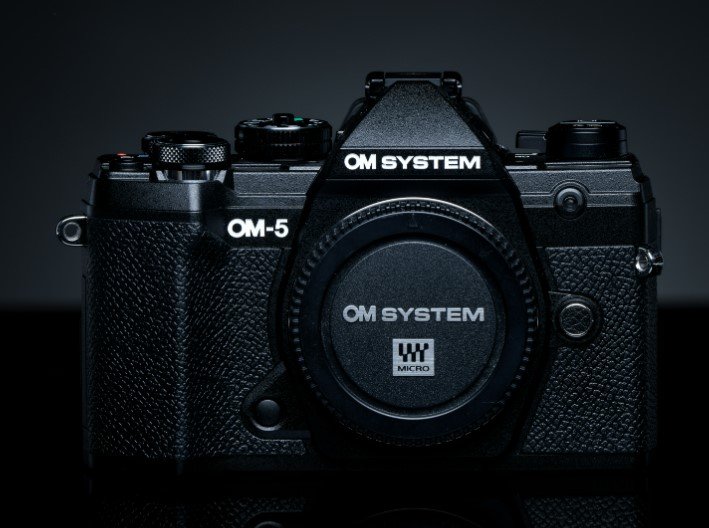A few tweaks, one new button, and a grip that feels just right — OM System’s latest travel camera is less about revolution and more about refinement.
The OM-5 Mark II has finally arrived, and while it doesn’t flip the script, it doesn’t really need to. This new iteration keeps the same bones as the popular OM-5 and Olympus EM-5 Mark III before it, but adds a bit more polish, a better grip, USB-C, and a fresh nod to computational photography. For travelers and outdoor shooters, it’s a subtle evolution — but in all the right directions.
A Camera That Knows Its Audience
At first glance, the OM-5 Mark II might leave some wondering what’s changed. But for those who spend their weekends on trails, beaches, or city alleys, it’s the little improvements that matter.
OM System hasn’t tried to reinvent the wheel here. The body still feels compact and rugged, perfect for tossing in a backpack without worrying about weight. But the grip — just slightly bigger — now gives your fingers something to actually wrap around.
And finally, after years of clinging to microUSB, the OM-5 Mark II embraces USB-C. Yes, it took long enough. But hey, it’s here.

The Magic Button That Isn’t Magic
The headline addition? A new “CP” button on top of the camera. It stands for “computational photography,” and it’s OM System’s way of inviting users to dig into the tech their cameras already had — but buried in menus.
With a tap of CP and a twist of the control dial, users can now access features like:
-
Handheld High-Res Shot
-
Tripod High-Res Shot
-
Live ND (ND2 to ND16)
-
Focus Stacking
-
HDR
-
Multiple Exposure
Honestly, these tools aren’t new. But surfacing them like this makes a world of difference, especially when you’re outdoors and don’t have time to dig around in settings.
A Familiar Sensor That Still Performs
Internally, OM System keeps things mostly the same. The OM-5 Mark II houses a 20.37-megapixel Live MOS sensor — the same one seen in its predecessor. It’s powered by the TruePic IX processor, another carryover.
Some might grumble at the lack of sensor upgrade. But performance isn’t an issue. The camera’s 121-point all cross-type phase detection AF still locks focus fast, and the five-axis image stabilization system delivers up to 7.5 stops of shake reduction — exceptional for its size.
This thing was built for motion, and it holds its ground.
Here’s a quick glance at what the OM-5 Mark II retains or upgrades:
| Feature | OM-5 Mark II | Notes |
|---|---|---|
| Sensor | 20.37MP Live MOS | Same as previous model |
| Processor | TruePic IX | Unchanged |
| Image Stabilization | 5-axis (up to 7.5 stops) | Still a standout feature |
| Autofocus | 121-point cross-type phase detect | Excellent for stills & video |
| Weather Resistance | IP53 | Very rare in consumer cameras |
| Port | USB-C | Finally replaces microUSB |
| Menu Interface | Updated to OM-1/OM-3 style | Easier navigation |
| CP Button | New addition | Direct access to computational tools |
One-sentence paragraph: The formula clearly works — OM System just gave it a light shine.
Built for the Wild, Not the Studio
The OM-5 Mark II carries an IP53 rating. That’s not just marketing fluff. It means it’ll hold up against dust and splashes, even in the kinds of conditions most brands won’t officially test.
Few camera makers offer IP-rated weather sealing at all. OM System’s decision to keep this on the OM-5 Mark II is a big deal for real-world shooters — especially those who treat cameras like tools, not trophies.
While the internals don’t scream “flagship,” the durability factor alone puts it ahead for those who shoot in unpredictable environments.
Video Still Isn’t the Main Attraction
OM System included its OM-Cinema Video Profiles here, aligning the OM-5 Mark II with some of its higher-end siblings. But make no mistake — this isn’t a cinema-first shooter.
You can film solid 4K video, sure. It’s crisp, smooth, and better with stabilization than many mirrorless cameras in this price range. But the OM-5 Mark II still feels more tailored to stills, particularly high-res landscapes, macro, and creative handheld shooting.
Vloggers? They’ll get by. Cinematographers? Probably looking elsewhere.
A Safe Bet That’s Hard to Fault
There’s no pricing info released globally yet, but early listings suggest a modest bump from the previous OM-5. That’s expected. Whether it justifies an upgrade depends on what you shoot.
If you already own the OM-5 or even the EM-5 Mark III, you’re not missing any revolutionary leap here. But if you’re coming from an older Olympus or want a lightweight, do-it-all travel companion that doesn’t care about a little rain or dust, this one’s hard to beat.
